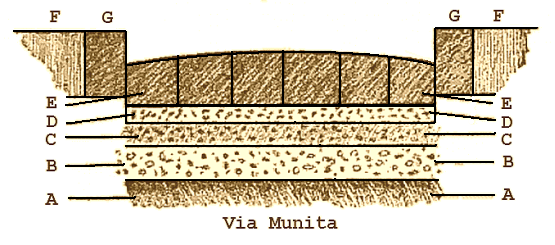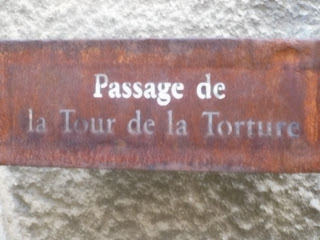Hey! It's Marmot Max again. Today, I'm going to take you along from France to Switzerland. The route goes up through the mountains and has been used by people for thousands of years.
I started out in Jougne, France, which is high upon a hill overlooking a deep valley. Check out the view from this bridge we had to cross:
It's a good thing that marmots aren't afraid of heights!
Long ago, before there were telephones or emails, people had to carry messages to places far, far away. There were bandits and knights that charged large fees to cross their lands. While today we often think of Knights as characters in fairy tales, they were real people and some of them were not so nice.
Needless to say, it was very expensive to send messages back then and only the most important people could send messages any further than the next town. Even Kings often had messengers kidnapped and held for ransom.
The road I am on was very important because it was the only way over the Alps to Rome, which was the most important city in the world. So many important people had to make this journey. Kings, dukes and religious pilgrims who wanted to visit the Pope in Rome had to pass through the Alps on the Via Francigena from 300 even until the 1500's.
This road was much older than that, however. It was built by the Romans so they could conquer France and Germany. The Romans were really good road builders. Really good. How good? Some of their roads are still around today:
The Romans had a special system for building roads, which they used throughout their empire, from Spain in the west to Turkey in the east.
The Romans built their roads with many layers, which ensured that the water would not stay on the road and make it muddy.
So knights built castles along the Via Francigena and charged tolls. One such castle was in Jougne. My guide, Mr. Geere, knows all about the Roman roads and how people traveled on them throughout the middle ages.
Here he is with Madame von Axe, who was surprised to discover that her house was a historic resting place on the trail from Paris to Rome. She was fixing a lightbulb when some plaster fell from the ceiling. She noticed the beams and contacted a historian that said, yes, her house was a resting place for kings and bishops from all over Europe! How exciting!
From his historical research, Mr. Geere knew that this church was frequently used for shelter by travelers on the road. Mr. Geere told us all about the special road and how he read the diary of someone who wrote about his journey and where he stayed. Since very, very few people in the middle ages could read or write (even Kings), this was a very important piece of history about the route the road took.
As we went on, we saw evidence of the history of the trail, like this street named after Roman Emperor Julius Caeser (who invented salad dressing and had his own pizza restaurant...hee hee.)
Switzerland actually has FOUR languages. French, German, Italian and Romansch. This may seem hard, but it has worked in Switzerland for hundreds of years. The part we were in spoke French. But Switzerland is a great place to learn other languages, that's for sure.
All along the route, there are ancient houses, churches and castles, but almost all have been modernized, that's what made Madame Von Axe's house so special--it still had original features.
Madame Von Axe's house was a priory--a house for the leaders of the local church. During the Dark Ages, there were many diseases, the water was dirty and most people did not take baths. So Kings and royalty generally did not want to stay in hotels with other people. They generally stayed with other knights or on church grounds. Madame Von Axe's house was one of these stops on the Via Francigena. Can you imagine a royal messenger stopping to stay the night here?
The church itself was very old, dating back to Roman times. But it had been rebuilt several times and had changed considerably.
Some of the artwork was really, really old.
This painting was on the ceiling of the church and could have been over 1,000 years old.
Parts of the church were really spooky.
And what kind of Church has a TORTURE TOWER?
It was a lot of fun walking part of this historic trail and I learned an awful lot. Swiss and French kids also learn about the history of their country--just like you do.
Learning about history is fun and important. You get to see beautiful places and meet interesting people who have lived interesting lives, like Madame Von Axe. I bet your teacher knows some interesting places that you could visit near you as well.

















No comments:
Post a Comment